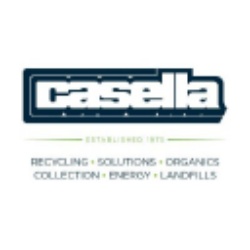JAN

JanOne Inc.
JAN
(1.2)2,23 USD
-1200.88% ROA
0% ROE
-0.85x PER
27.141.553,00 USD
38.14% DER
0% Yield
0% NPM
JanOne Inc. Stock Analysis
JanOne Inc. Fundamental Analysis
Fundamental analysis in stock investing is like studying the foundation of a house before buying it. It involves looking at a company's financial health, like its earnings, assets, and debts, to determine if it's a good investment based on its fundamental strength and potential for growth.
| # | Analysis | Rating |
|---|---|---|
| 1 |
PBV
The stock's low PBV ratio (0.12x) suggests it's undervalued, making it an attractive opportunity for investors. |
|
| 2 |
DER
The stock has a minimal amount of debt (0%) relative to its ownership, showcasing a strong financial position and lower risk for investors. |
|
| 3 |
Graham Number
The Graham number analysis indicates that this company's stock price is likely undervalued, raising prospects for a favorable investment opportunity. |
|
| 4 |
ROE
Negative ROE (-78.28%) indicates poor financial performance, raising concerns about profitability and efficiency in utilizing shareholders' equity. |
|
| 5 |
ROA
The stock's ROA (-56.59%) indicates that it's not effectively utilizing its assets to generate profits, making it a less favorable option to invest and earn consistent returns. |
|
| 6 |
Revenue Growth
Company's revenue has stayed stagnant, showing no signs of improvement and making it a less favorable choice. |
|
| 7 |
Net Profit Growth
Despite the passage of five years, this company's net profit has not shown any improvement, highlighting a lack of growth and making it a less appealing investment prospect. |
|
| 8 |
Assets Growth
Company's revenue has remained stagnant over the past three years, indicating a lack of growth and making it a less favorable option. |
|
| 9 |
Dividend Growth
Investors should note the company's stagnant dividend growth over the past three years, indicating limited profitability and potentially diminishing returns. |
|
| 10 |
Dividend
Investors should be cautious as the company hasn't distributed dividends in the last three years, possibly indicating financial challenges. |
|
| 11 |
Buffet Intrinsic Value
The company's stock presents a potential concern as it appears overvalued (0) by Warren Buffett's formula, indicating that its market price exceeds its estimated intrinsic value. |
JanOne Inc. Technical Analysis
Technical analysis in stock investing is like reading the patterns on a weather map to predict future weather conditions. It involves studying past stock price movements and trading volumes to make predictions about where a stock's price might go next, without necessarily looking at the company's financial health.
| # | Analysis | Recommendation |
|---|---|---|
| 1 | Awesome Oscillator | Hold |
| 2 | MACD | Buy |
| 3 | RSI | Hold |
| 4 | Stoch RSI | Hold |
JanOne Inc. Price Chart
Financial Statements
Financial statements are like report cards for companies. They show how much money a company makes (income statement), what it owns and owes (balance sheet), and where it spends its money (cash flow statement), helping stock investors understand if a company is healthy and worth investing in.
Income Statements
An income statement for a company is like a scoreboard for its profits and losses. It shows how much money the company made (revenue) and how much it spent to make that money (expenses), helping stock investors see if a company is making a profit or not.
Revenue in stock investing is the total amount of money a company earns from its sales, and it's a key factor that investors consider to assess a company's financial performance and growth potential.
| Year | Revenue | Growth |
|---|---|---|
| 1991 | 7.500.000 | |
| 1992 | 15.100.000 | 50.33% |
| 1993 | 14.500.000 | -4.14% |
| 1994 | 19.900.000 | 27.14% |
| 1995 | 16.200.000 | -22.84% |
| 1996 | 14.030.000 | -15.47% |
| 1997 | 11.979.000 | -17.12% |
| 1998 | 13.612.000 | 12% |
| 1999 | 15.582.000 | 12.64% |
| 2000 | 21.479.000 | 27.45% |
| 2001 | 43.810.000 | 50.97% |
| 2002 | 45.720.000 | 4.18% |
| 2003 | 43.609.000 | -4.84% |
| 2004 | 52.830.000 | 17.45% |
| 2005 | 74.893.000 | 29.46% |
| 2006 | 77.790.000 | 3.72% |
| 2007 | 100.765.000 | 22.8% |
| 2008 | 110.971.000 | 9.2% |
| 2009 | 101.269.000 | -9.58% |
| 2010 | 108.162.000 | 6.37% |
| 2011 | 126.669.000 | 14.61% |
| 2012 | 114.313.000 | -10.81% |
| 2013 | 129.061.000 | 11.43% |
| 2014 | 130.930.000 | 1.43% |
| 2015 | 111.839.000 | -17.07% |
| 2016 | 103.589.000 | -7.96% |
| 2017 | 41.544.000 | -149.35% |
| 2018 | 36.794.000 | -12.91% |
| 2019 | 35.097.000 | -4.84% |
| 2020 | 33.867.000 | -3.63% |
| 2021 | 40.022.000 | 15.38% |
| 2022 | 39.611.000 | -1.04% |
| 2023 | 0 | 0% |
| 2023 | 0 | 0% |
| 2024 | 0 | 0% |
Research and Development Expenses are the costs a company incurs to create and improve its products or services, which can be important for investors to evaluate a company's innovation and potential for future growth.
| Year | Research and Development Expenses | Growth |
|---|---|---|
| 1991 | 0 | |
| 1992 | 0 | 0% |
| 1993 | 0 | 0% |
| 1994 | 0 | 0% |
| 1995 | 0 | 0% |
| 1996 | 0 | 0% |
| 1997 | 0 | 0% |
| 1998 | 0 | 0% |
| 1999 | 0 | 0% |
| 2000 | 0 | 0% |
| 2001 | 0 | 0% |
| 2002 | 0 | 0% |
| 2003 | 0 | 0% |
| 2004 | 0 | 0% |
| 2005 | 0 | 0% |
| 2006 | 0 | 0% |
| 2007 | 0 | 0% |
| 2008 | 0 | 0% |
| 2009 | 0 | 0% |
| 2010 | 0 | 0% |
| 2011 | 0 | 0% |
| 2012 | 150.000 | 100% |
| 2013 | 145.000 | -3.45% |
| 2014 | 134.000 | -8.21% |
| 2015 | 117.000 | -14.53% |
| 2016 | 0 | 0% |
| 2017 | 0 | 0% |
| 2018 | 0 | 0% |
| 2019 | 0 | 0% |
| 2020 | 0 | 0% |
| 2021 | 0 | 0% |
| 2022 | 0 | 0% |
| 2023 | 0 | 0% |
| 2023 | 0 | 0% |
| 2024 | 0 | 0% |
General and Administrative Expenses are the costs a company incurs to run its day-to-day operations, such as office rent, salaries, and utilities, which investors consider to understand a company's overall efficiency and management effectiveness.
| Year | General and Administrative Expenses | Growth |
|---|---|---|
| 1991 | 0 | |
| 1992 | 0 | 0% |
| 1993 | 0 | 0% |
| 1994 | 0 | 0% |
| 1995 | 0 | 0% |
| 1996 | 0 | 0% |
| 1997 | 0 | 0% |
| 1998 | 0 | 0% |
| 1999 | 0 | 0% |
| 2000 | 0 | 0% |
| 2001 | 0 | 0% |
| 2002 | 0 | 0% |
| 2003 | 0 | 0% |
| 2004 | 0 | 0% |
| 2005 | 0 | 0% |
| 2006 | 0 | 0% |
| 2007 | 0 | 0% |
| 2008 | 0 | 0% |
| 2009 | 0 | 0% |
| 2010 | 0 | 0% |
| 2011 | 0 | 0% |
| 2012 | 12.600.000 | 100% |
| 2013 | 0 | 0% |
| 2014 | 0 | 0% |
| 2015 | 27.730.000 | 100% |
| 2016 | 28.101.000 | 1.32% |
| 2017 | 0 | 0% |
| 2018 | 0 | 0% |
| 2019 | 0 | 0% |
| 2020 | 17.444.000 | 100% |
| 2021 | 0 | 0% |
| 2022 | 0 | 0% |
| 2023 | 0 | 0% |
| 2023 | 0 | 0% |
| 2024 | 0 | 0% |
EBITDA stands for Earnings Before Interest, Taxes, Depreciation, and Amortization. It is a measure that helps stock investors analyze a company's profitability by looking at its earnings without considering certain expenses. This helps to get a clearer picture of the company's financial performance and its ability to generate cash flow.
| Year | EBITDA | Growth |
|---|---|---|
| 1991 | 1.100.000 | |
| 1992 | 2.700.000 | 59.26% |
| 1993 | 500.000 | -440% |
| 1994 | 3.400.000 | 85.29% |
| 1995 | -400.000 | 950% |
| 1996 | -4.544.000 | 91.2% |
| 1997 | 404.000 | 1224.75% |
| 1998 | -2.359.000 | 117.13% |
| 1999 | 1.390.000 | 269.71% |
| 2000 | 1.963.000 | 29.19% |
| 2001 | 5.144.000 | 61.84% |
| 2002 | 2.202.000 | -133.61% |
| 2003 | -1.160.000 | 289.83% |
| 2004 | -465.000 | -149.46% |
| 2005 | 600.000 | 177.5% |
| 2006 | -1.081.000 | 155.5% |
| 2007 | 5.133.000 | 121.06% |
| 2008 | 5.158.000 | 0.48% |
| 2009 | -2.161.000 | 338.69% |
| 2010 | 4.471.000 | 148.33% |
| 2011 | 8.547.000 | 47.69% |
| 2012 | -2.140.000 | 499.39% |
| 2013 | 4.669.000 | 145.83% |
| 2014 | 2.597.000 | -79.78% |
| 2015 | -3.854.000 | 167.38% |
| 2016 | 569.000 | 777.33% |
| 2017 | 1.945.000 | 70.75% |
| 2018 | -2.099.000 | 192.66% |
| 2019 | -6.057.000 | 65.35% |
| 2020 | -5.292.000 | -14.46% |
| 2021 | -1.785.000 | -196.47% |
| 2022 | -2.292.000 | 22.12% |
| 2023 | -536.000 | -327.61% |
| 2023 | -3.246.000 | 83.49% |
| 2024 | -4.668.000 | 30.46% |
Gross profit is the money a company makes from selling its products or services after subtracting the cost of producing or providing them, and it is an important measure for investors to understand a company's profitability.
| Year | Gross Profit | Growth |
|---|---|---|
| 1991 | 4.000.000 | |
| 1992 | 7.700.000 | 48.05% |
| 1993 | 6.200.000 | -24.19% |
| 1994 | 10.000.000 | 38% |
| 1995 | 7.100.000 | -40.85% |
| 1996 | 2.744.000 | -158.75% |
| 1997 | 4.990.000 | 45.01% |
| 1998 | 3.981.000 | -25.35% |
| 1999 | 7.061.000 | 43.62% |
| 2000 | 9.306.000 | 24.12% |
| 2001 | 17.329.000 | 46.3% |
| 2002 | 15.774.000 | -9.86% |
| 2003 | 11.879.000 | -32.79% |
| 2004 | 15.543.000 | 23.57% |
| 2005 | 22.487.000 | 30.88% |
| 2006 | 23.475.000 | 4.21% |
| 2007 | 32.769.000 | 28.36% |
| 2008 | 35.610.000 | 7.98% |
| 2009 | 28.377.000 | -25.49% |
| 2010 | 32.899.000 | 13.75% |
| 2011 | 36.735.000 | 10.44% |
| 2012 | 27.955.000 | -31.41% |
| 2013 | 33.874.000 | 17.47% |
| 2014 | 32.810.000 | -3.24% |
| 2015 | 25.448.000 | -28.93% |
| 2016 | 28.665.000 | 11.22% |
| 2017 | 13.145.000 | -118.07% |
| 2018 | 11.053.000 | -18.93% |
| 2019 | 7.786.000 | -41.96% |
| 2020 | 8.827.000 | 11.79% |
| 2021 | 8.868.000 | 0.46% |
| 2022 | 7.619.000 | -16.39% |
| 2023 | 0 | 0% |
| 2023 | -1.500.000 | 100% |
| 2024 | -2.556.000 | 41.31% |
Net income in stock investing is like the money a company actually gets to keep as profit after paying all its bills, and it's an important measure to understand how well a company is doing financially.
| Year | Net Profit | Growth |
|---|---|---|
| 1991 | 400.000 | |
| 1992 | 1.200.000 | 66.67% |
| 1993 | -500.000 | 340% |
| 1994 | 900.000 | 155.56% |
| 1995 | -900.000 | 200% |
| 1996 | -7.269.000 | 87.62% |
| 1997 | -748.000 | -871.79% |
| 1998 | -3.056.000 | 75.52% |
| 1999 | 505.000 | 705.15% |
| 2000 | 927.000 | 45.52% |
| 2001 | 2.646.000 | 64.97% |
| 2002 | 332.000 | -696.99% |
| 2003 | -1.541.000 | 121.54% |
| 2004 | -1.314.000 | -17.28% |
| 2005 | -933.000 | -40.84% |
| 2006 | -1.409.000 | 33.78% |
| 2007 | 2.539.000 | 155.49% |
| 2008 | 360.000 | -605.28% |
| 2009 | -3.338.000 | 110.78% |
| 2010 | 2.009.000 | 266.15% |
| 2011 | 4.461.000 | 54.97% |
| 2012 | -3.852.000 | 215.81% |
| 2013 | 3.318.000 | 216.09% |
| 2014 | 771.000 | -330.35% |
| 2015 | -2.717.000 | 128.38% |
| 2016 | -1.451.000 | -87.25% |
| 2017 | 118.000 | 1329.66% |
| 2018 | -5.608.000 | 102.1% |
| 2019 | -11.964.000 | 53.13% |
| 2020 | -8.498.000 | -40.79% |
| 2021 | -16.887.000 | 49.68% |
| 2022 | 3.589.000 | 570.52% |
| 2023 | -856.000 | 519.28% |
| 2023 | -20.060.000 | 95.73% |
| 2024 | -8.576.000 | -133.91% |
EPS, or earnings per share, is a measure that shows how much profit a company has earned for each outstanding share of its stock, and it is important for stock investors as it helps understand the profitability of a company and compare it with other companies in the market.
| Year | Earning per Share (EPS) | Growth |
|---|---|---|
| 1991 | 10 | |
| 1992 | 26 | 64% |
| 1993 | -2 | 1350% |
| 1994 | 16 | 112.5% |
| 1995 | -4 | 500% |
| 1996 | -131 | 96.92% |
| 1997 | -3 | -4233.33% |
| 1998 | -13 | 75% |
| 1999 | 1 | 1300% |
| 2000 | 2 | 50% |
| 2001 | 6 | 60% |
| 2002 | 1 | 0% |
| 2003 | -3 | 100% |
| 2004 | -2 | -50% |
| 2005 | -1 | -100% |
| 2006 | -2 | 0% |
| 2007 | 3 | 150% |
| 2008 | 0 | 0% |
| 2009 | -4 | 100% |
| 2010 | 2 | 400% |
| 2011 | 4 | 75% |
| 2012 | -3 | 233.33% |
| 2013 | 3 | 250% |
| 2014 | 1 | 0% |
| 2015 | -2 | 100% |
| 2016 | -1 | -100% |
| 2017 | 0 | 0% |
| 2018 | -4 | 100% |
| 2019 | -7 | 50% |
| 2020 | -5 | -50% |
| 2021 | -6 | 33.33% |
| 2022 | 1 | 700% |
| 2023 | 0 | 0% |
| 2023 | -5 | 100% |
| 2024 | -1 | -400% |
Cashflow Statements
Cashflow statements show the movement of money in and out of a company, helping stock investors understand how much money a company makes and spends. By examining cashflow statements, investors can assess if a company is generating enough cash to pay its bills, invest in growth, and provide returns to stockholders.
Free cash flow is the leftover cash that a company generates after covering its operating expenses and capital expenditures, which is important for stock investors as it shows how much money a company has available to invest in growth, pay dividends, or reduce debt.
| Year | Free Cashflow | Growth |
|---|---|---|
| 1991 | 500.000 | |
| 1992 | 500.000 | 0% |
| 1993 | -6.200.000 | 108.06% |
| 1994 | 1.100.000 | 663.64% |
| 1995 | 2.200.000 | 50% |
| 1996 | -5.427.000 | 140.54% |
| 1997 | 9.000 | 60400% |
| 1998 | -3.367.000 | 100.27% |
| 1999 | -51.000 | -6501.96% |
| 2000 | -1.799.000 | 97.17% |
| 2001 | -2.034.000 | 11.55% |
| 2002 | 2.709.000 | 175.08% |
| 2003 | -2.949.000 | 191.86% |
| 2004 | -392.000 | -652.3% |
| 2005 | -2.666.000 | 85.3% |
| 2006 | -563.000 | -373.53% |
| 2007 | -7.180.000 | 92.16% |
| 2008 | 837.000 | 957.83% |
| 2009 | 827.000 | -1.21% |
| 2010 | -2.152.000 | 138.43% |
| 2011 | -381.000 | -464.83% |
| 2012 | -267.000 | -42.7% |
| 2013 | 1.239.000 | 121.55% |
| 2014 | 2.777.000 | 55.38% |
| 2015 | -3.813.000 | 172.83% |
| 2016 | 2.284.000 | 266.94% |
| 2017 | 1.005.000 | -127.26% |
| 2018 | 3.744.000 | 73.16% |
| 2019 | -4.010.000 | 193.37% |
| 2020 | -1.451.000 | -176.36% |
| 2021 | -7.016.000 | 79.32% |
| 2022 | -4.565.000 | -53.69% |
| 2023 | -439.000 | -939.86% |
| 2023 | 1.463.000 | 130.01% |
| 2024 | -544.000 | 368.93% |
Operating cash flow represents the cash generated or consumed by a company's day-to-day operations, excluding external investing or financing activities, and is crucial for stock investors as it shows how much cash a company is generating from its core business operations.
| Year | Operating Cashflow | Growth |
|---|---|---|
| 1991 | 700.000 | |
| 1992 | 2.300.000 | 69.57% |
| 1993 | -900.000 | 355.56% |
| 1994 | 1.800.000 | 150% |
| 1995 | 3.700.000 | 51.35% |
| 1996 | -4.142.000 | 189.33% |
| 1997 | 308.000 | 1444.81% |
| 1998 | -3.078.000 | 110.01% |
| 1999 | 201.000 | 1631.34% |
| 2000 | -1.190.000 | 116.89% |
| 2001 | -1.124.000 | -5.87% |
| 2002 | 3.307.000 | 133.99% |
| 2003 | -2.391.000 | 238.31% |
| 2004 | 267.000 | 995.51% |
| 2005 | -2.149.000 | 112.42% |
| 2006 | -10.000 | -21390% |
| 2007 | -6.248.000 | 99.84% |
| 2008 | 1.649.000 | 478.9% |
| 2009 | 1.336.000 | -23.43% |
| 2010 | 3.475.000 | 61.55% |
| 2011 | 1.376.000 | -152.54% |
| 2012 | 551.000 | -149.73% |
| 2013 | 1.740.000 | 68.33% |
| 2014 | 3.595.000 | 51.6% |
| 2015 | -3.409.000 | 205.46% |
| 2016 | 2.659.000 | 228.21% |
| 2017 | 1.226.000 | -116.88% |
| 2018 | 4.145.000 | 70.42% |
| 2019 | -3.510.000 | 218.09% |
| 2020 | -617.000 | -468.88% |
| 2021 | -5.292.000 | 88.34% |
| 2022 | -3.056.000 | -73.17% |
| 2023 | -439.000 | -596.13% |
| 2023 | 1.463.000 | 130.01% |
| 2024 | -544.000 | 368.93% |
Capex, short for capital expenditures, refers to the money a company spends on acquiring or upgrading tangible assets like buildings, equipment, or technology, which is important for stock investors as it indicates how much a company is investing in its infrastructure to support future growth and profitability.
| Year | Capital Expenditure | Growth |
|---|---|---|
| 1991 | 200.000 | |
| 1992 | 1.800.000 | 88.89% |
| 1993 | 5.300.000 | 66.04% |
| 1994 | 700.000 | -657.14% |
| 1995 | 1.500.000 | 53.33% |
| 1996 | 1.285.000 | -16.73% |
| 1997 | 299.000 | -329.77% |
| 1998 | 289.000 | -3.46% |
| 1999 | 252.000 | -14.68% |
| 2000 | 609.000 | 58.62% |
| 2001 | 910.000 | 33.08% |
| 2002 | 598.000 | -52.17% |
| 2003 | 558.000 | -7.17% |
| 2004 | 659.000 | 15.33% |
| 2005 | 517.000 | -27.47% |
| 2006 | 553.000 | 6.51% |
| 2007 | 932.000 | 40.67% |
| 2008 | 812.000 | -14.78% |
| 2009 | 509.000 | -59.53% |
| 2010 | 5.627.000 | 90.95% |
| 2011 | 1.757.000 | -220.26% |
| 2012 | 818.000 | -114.79% |
| 2013 | 501.000 | -63.27% |
| 2014 | 818.000 | 38.75% |
| 2015 | 404.000 | -102.48% |
| 2016 | 375.000 | -7.73% |
| 2017 | 221.000 | -69.68% |
| 2018 | 401.000 | 44.89% |
| 2019 | 500.000 | 19.8% |
| 2020 | 834.000 | 40.05% |
| 2021 | 1.724.000 | 51.62% |
| 2022 | 1.509.000 | -14.25% |
| 2023 | 0 | 0% |
| 2023 | 0 | 0% |
| 2024 | 0 | 0% |
Balance Sheet
Balance sheets provide a snapshot of a company's financial health and its assets (such as cash, inventory, and property) and liabilities (like debts and obligations) at a specific point in time. For stock investors, balance sheets help assess the company's overall worth and evaluate its ability to meet financial obligations and support future growth.
Equity refers to the ownership interest or stake that shareholders have in a company, representing their claim on its assets and earnings after all debts and liabilities are paid.
| Year | Equity | Growth |
|---|---|---|
| 1991 | 3.600.000 | |
| 1992 | 4.800.000 | 25% |
| 1993 | 9.800.000 | 51.02% |
| 1994 | 10.900.000 | 10.09% |
| 1995 | 10.200.000 | -6.86% |
| 1996 | 4.113.000 | -147.99% |
| 1997 | 3.365.000 | -22.23% |
| 1998 | 816.000 | -312.38% |
| 1999 | 1.809.000 | 54.89% |
| 2000 | 2.751.000 | 34.24% |
| 2001 | 5.397.000 | 49.03% |
| 2002 | 5.737.000 | 5.93% |
| 2003 | 4.209.000 | -36.3% |
| 2004 | 6.063.000 | 30.58% |
| 2005 | 5.421.000 | -11.84% |
| 2006 | 4.142.000 | -30.88% |
| 2007 | 7.262.000 | 42.96% |
| 2008 | 7.989.000 | 9.1% |
| 2009 | 5.643.000 | -41.57% |
| 2010 | 12.147.000 | 53.54% |
| 2011 | 17.380.000 | 30.11% |
| 2012 | 13.234.000 | -31.33% |
| 2013 | 16.962.000 | 21.98% |
| 2014 | 16.238.000 | -4.46% |
| 2015 | 12.044.000 | -34.82% |
| 2016 | 11.209.000 | -7.45% |
| 2017 | 26.238.000 | 57.28% |
| 2018 | 21.611.000 | -21.41% |
| 2019 | 10.341.000 | -108.98% |
| 2020 | 2.366.000 | -337.07% |
| 2021 | -8.676.000 | 127.27% |
| 2022 | 16.817.000 | 151.59% |
| 2023 | 14.498.000 | -16% |
| 2023 | 11.202.000 | -29.42% |
| 2024 | 7.629.000 | -46.83% |
Assets represent the valuable resources that a company owns, such as cash, inventory, property, and equipment, and understanding a company's assets helps investors assess its value and potential for generating future profits.
| Year | Assets | Growth |
|---|---|---|
| 1991 | 5.200.000 | |
| 1992 | 9.900.000 | 47.47% |
| 1993 | 14.400.000 | 31.25% |
| 1994 | 16.800.000 | 14.29% |
| 1995 | 15.900.000 | -5.66% |
| 1996 | 9.992.000 | -59.13% |
| 1997 | 8.569.000 | -16.61% |
| 1998 | 8.843.000 | 3.1% |
| 1999 | 9.517.000 | 7.08% |
| 2000 | 12.651.000 | 24.77% |
| 2001 | 18.936.000 | 33.19% |
| 2002 | 20.239.000 | 6.44% |
| 2003 | 20.833.000 | 2.85% |
| 2004 | 24.340.000 | 14.41% |
| 2005 | 24.491.000 | 0.62% |
| 2006 | 23.913.000 | -2.42% |
| 2007 | 35.532.000 | 32.7% |
| 2008 | 37.415.000 | 5.03% |
| 2009 | 31.450.000 | -18.97% |
| 2010 | 39.864.000 | 21.11% |
| 2011 | 46.809.000 | 14.84% |
| 2012 | 41.804.000 | -11.97% |
| 2013 | 44.979.000 | 7.06% |
| 2014 | 46.746.000 | 3.78% |
| 2015 | 46.846.000 | 0.21% |
| 2016 | 41.856.000 | -11.92% |
| 2017 | 46.891.000 | 10.74% |
| 2018 | 34.621.000 | -35.44% |
| 2019 | 29.034.000 | -19.24% |
| 2020 | 24.351.000 | -19.23% |
| 2021 | 15.165.000 | -60.57% |
| 2022 | 46.756.000 | 67.57% |
| 2023 | 34.489.000 | -35.57% |
| 2023 | 18.487.000 | -86.56% |
| 2024 | 18.578.000 | 0.49% |
Liabilities refer to the financial obligations or debts that a company owes to creditors or external parties, and understanding a company's liabilities is important for investors as it helps assess the company's financial risk and ability to meet its obligations.
| Year | Liabilities | Growth |
|---|---|---|
| 1991 | 1.600.000 | |
| 1992 | 5.100.000 | 68.63% |
| 1993 | 4.600.000 | -10.87% |
| 1994 | 5.900.000 | 22.03% |
| 1995 | 5.700.000 | -3.51% |
| 1996 | 5.879.000 | 3.04% |
| 1997 | 5.204.000 | -12.97% |
| 1998 | 8.027.000 | 35.17% |
| 1999 | 7.708.000 | -4.14% |
| 2000 | 9.900.000 | 22.14% |
| 2001 | 13.539.000 | 26.88% |
| 2002 | 14.502.000 | 6.64% |
| 2003 | 16.624.000 | 12.76% |
| 2004 | 18.277.000 | 9.04% |
| 2005 | 19.070.000 | 4.16% |
| 2006 | 19.771.000 | 3.55% |
| 2007 | 28.270.000 | 30.06% |
| 2008 | 29.426.000 | 3.93% |
| 2009 | 25.807.000 | -14.02% |
| 2010 | 27.717.000 | 6.89% |
| 2011 | 29.429.000 | 5.82% |
| 2012 | 28.570.000 | -3.01% |
| 2013 | 28.017.000 | -1.97% |
| 2014 | 30.508.000 | 8.17% |
| 2015 | 34.802.000 | 12.34% |
| 2016 | 30.647.000 | -13.56% |
| 2017 | 20.653.000 | -48.39% |
| 2018 | 13.010.000 | -58.75% |
| 2019 | 18.693.000 | 30.4% |
| 2020 | 21.985.000 | 14.97% |
| 2021 | 23.841.000 | 7.78% |
| 2022 | 29.939.000 | 20.37% |
| 2023 | 19.991.000 | -49.76% |
| 2023 | 7.285.000 | -174.41% |
| 2024 | 10.949.000 | 33.46% |
Dividends
Dividends in stock investing are like rewards that companies give to their shareholders. They are a portion of the company's profits distributed to investors, typically in the form of cash payments, as a way for them to share in the company's success.
| Year | Dividends | Growth |
|---|
JanOne Inc. Profile
About JanOne Inc.
JanOne Inc., a clinical-stage biopharmaceutical company, focuses on identifying, acquiring, licensing, developing, partnering, and commercializing novel, non-opioid, and non-addictive therapies to address the unmet medical need for the treatment of pain and addiction. It operates through three segments: Biotechnology, Recycling, and Technology. The company's lead product candidate is JAN101, a patented oral and sustained release pharmaceutical composition of sodium nitrite that targets poor blood flow to the extremities in patients with diabetes or peripheral artery disease to treat pain. It also provides turnkey appliance recycling and replacement services for utilities and other sponsors of energy efficiency programs; and designs, develops, and sells cellular transceiver modules and associated wireless services. The company was formerly known as Appliance Recycling Centers of America, Inc. and changed its name to JanOne Inc. in September 2019. JanOne Inc. was founded in 1976 and is headquartered in Las Vegas, Nevada.
- CEO
- Mr. Tony Isaac
- Employee
- 5
- Address
-
325 East Warm Springs Road
Las Vegas, 89119
JanOne Inc. Executives & BODs
| # | Name | Age |
|---|---|---|
| 1 |
Dr. Tony Giordano Ph.D. Chief Scientific Officer |
70 |
| 2 |
Mr. Virland A. Johnson CPA Chief Financial Officer |
70 |
| 3 |
Mr. Tony Isaac President, Chief Executive Officer, Corporate Secretary, Treasurer & Director |
70 |
| 4 |
Dr. Douglas Flanagan Chief Formulation Advisor |
70 |

















